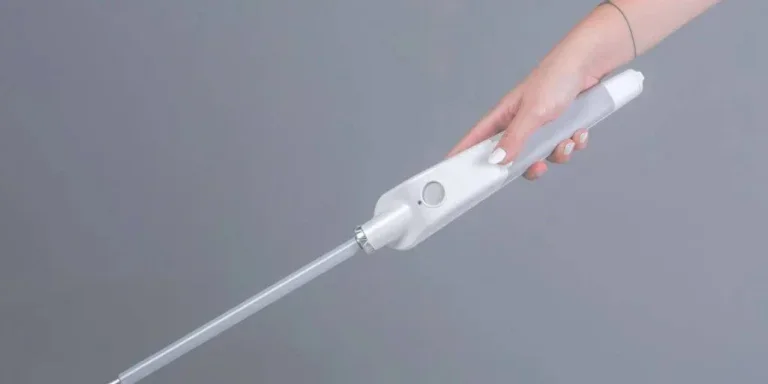Since the rise of generative AI technology, various AI products have begun to transform our work and lives. For some special groups, AI technology, especially multimodal AI, holds even greater significance.
At this year’s CES, the startup WeWALK showcased the new Smart Cane 2, designed specifically for the visually impaired. It not only addresses some issues from the model released six years ago but also adds AI functionality.
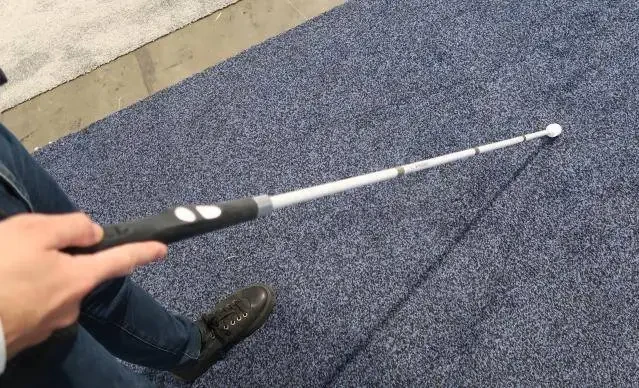
WeWALK co-founder Kursat Ceylan, who is visually impaired himself, stated that the Smart Cane 2 makes his daily travel easier and safer, and it doesn’t necessarily require simultaneous use of a smartphone.
Many updates to the Smart Cane 2 bring it closer to the standard white cane used by the visually impaired. This is first reflected in the cane’s size and weight. Compared to the previous generation, the Smart Cane 2’s handle is slimmer, and the interaction method has shifted from a touchpad to more intuitive buttons. The overall weight of the cane has also been reduced, with the company claiming it is almost identical to a standard white cane.
The Smart Cane 2 is foldable and waterproof, making it suitable for use in various weather conditions. Its battery life is approximately 20 hours, which means users can use the cane for extended outdoor activities.
In terms of sensors, the Smart Cane 2 is equipped with ultrasonic sensors provided by the electronics company TDK, an inertial measurement unit that tracks movement in six directions, a pulse density modulation microphone, and a barometric sensor. Therefore, this cane can perceive the external environment from multiple angles. When it detects an obstacle in front of the user, it provides tactile and audio feedback to alert them.
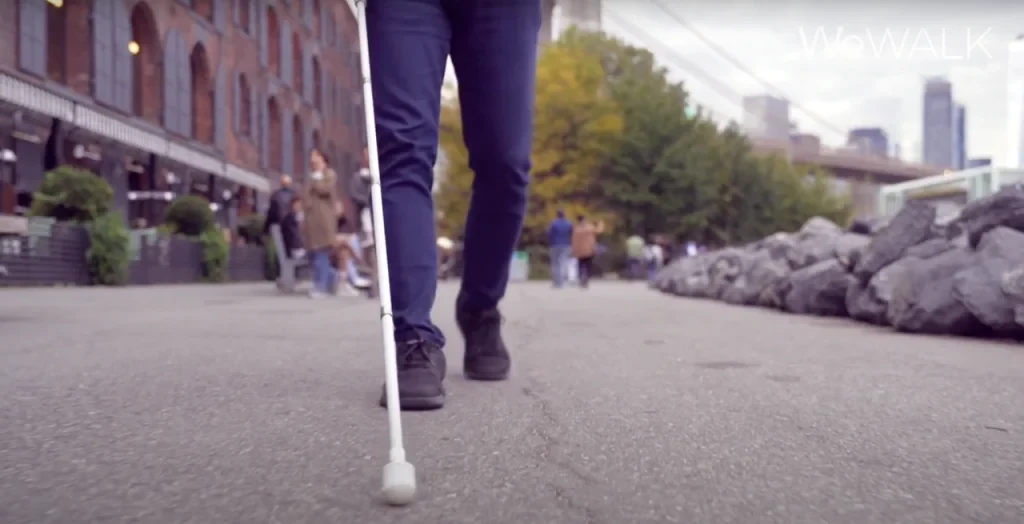
At the noisy and crowded CES venue, Ceylan personally demonstrated the Smart Cane 2. When the cane approached an obstacle, the alert sound from its speaker was loud enough for nearby journalists to hear. The obstacle was a small carpeted step that many sighted attendees tripped over.
When connected to a smartphone, the cane can not only detect obstacles but also provide information about the surrounding environment, such as the names of nearby stores and restaurants. This is a new intelligent feature developed based on GPT.
With the help of the AI voice assistant, users can activate the cane’s navigation function directly by voice. It can recognize detailed destination names as well as vague commands like “take me to the nearest coffee shop” or “take me home,” and the route planning includes public transportation options.

An important significance of the smart cane is that it frees up the hands of visually impaired individuals. Often, when visually impaired people go out, they need one hand to hold the cane and the other hand to hold a phone for identification and operation. If they also need to carry luggage or other items, the situation becomes even more difficult.
This is precisely the inconvenience Ceylan experienced in his daily life, which led to the development of the smart cane. The goal is to allow visually impaired individuals to put their phones in their pockets and use just one cane to access all the information they need.
Ceylan believes that reducing travel difficulties for people with disabilities is very important because it means they can better participate in life.
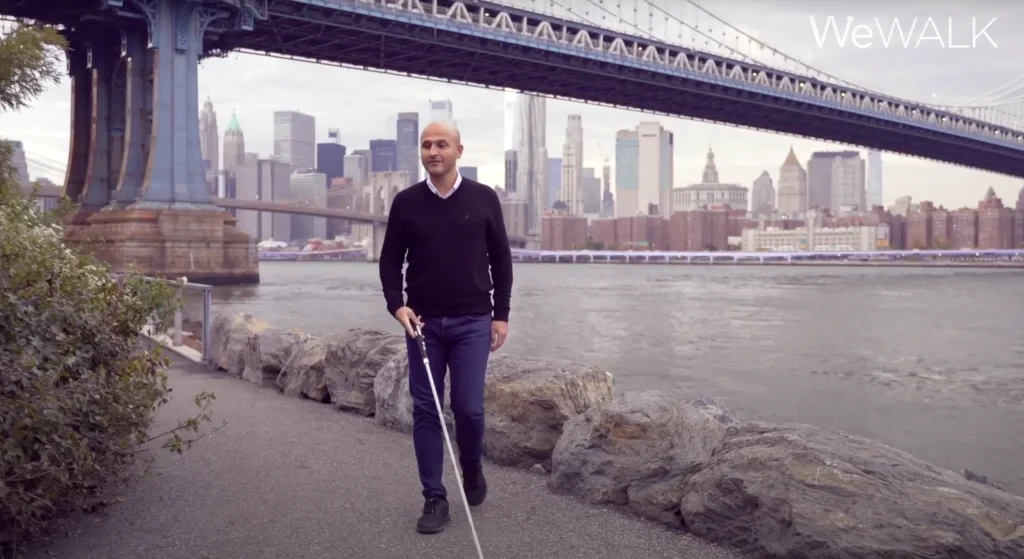
After watching the demonstration, Engadget gave high praise to the integration of AI with this product:
“Not only very reasonable but also genuinely useful.”
At the CES show, there were many products integrated with AI, but many of them gave the impression of just “supporting AI” without truly utilizing AI to create new value and meaning.
However, in some AI hardware specifically designed for people with disabilities, we truly felt the assistance AI provides. Besides the Smart Cane 2, there was also a head-mounted device called DotLumen at CES, which can intelligently recognize the wearer’s surroundings and help visually impaired individuals avoid obstacles through audio and tactile feedback.
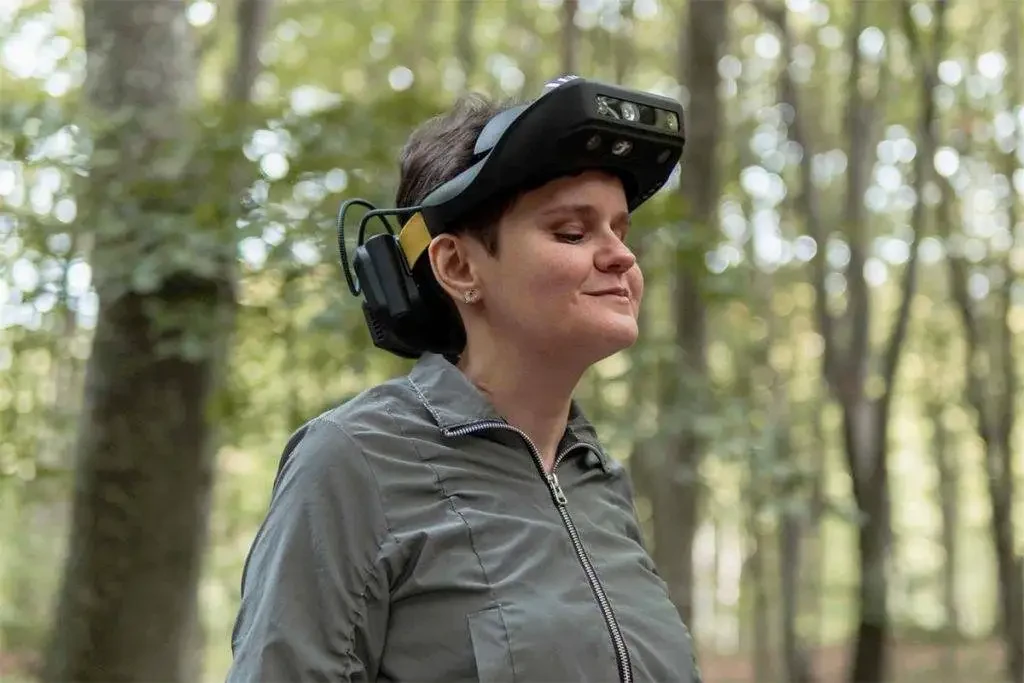
There are also AI products already in use, such as smart glasses that convert real-time speech to text and mobile apps that help people with speech impairments. These products are helping more people with disabilities live better lives from multiple directions.
The WeWALK Smart Cane 2 is now available for pre-order, with the first batch expected to ship by the end of this month. The cane is not cheap: the product itself costs $850, with a $4.99 monthly subscription fee for the AI assistant, or a total of $1150 for a one-time purchase of the cane and AI subscription.
However, in some regions and countries, the first-generation Smart Cane has already been included in health insurance coverage or purchased and distributed by the government. Compared to the training cost of a guide dog, which is close to $30,000, the Smart Cane is clearly a more accessible solution.
WeWALK also announced a partnership with the Canadian National Institute for the Blind to help more people in need understand and learn to use the cane and to help improve its functionality.
Source from ifanr
Disclaimer: The information set forth above is provided by ifanr.com, independently of Alibaba.com. Alibaba.com makes no representation and warranties as to the quality and reliability of the seller and products. Alibaba.com expressly disclaims any liability for breaches pertaining to the copyright of content.
